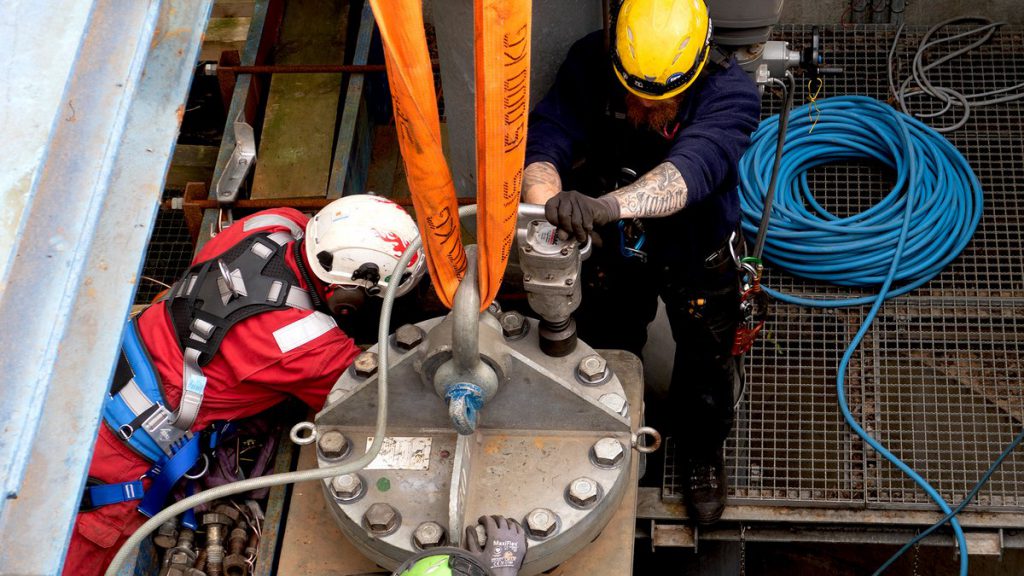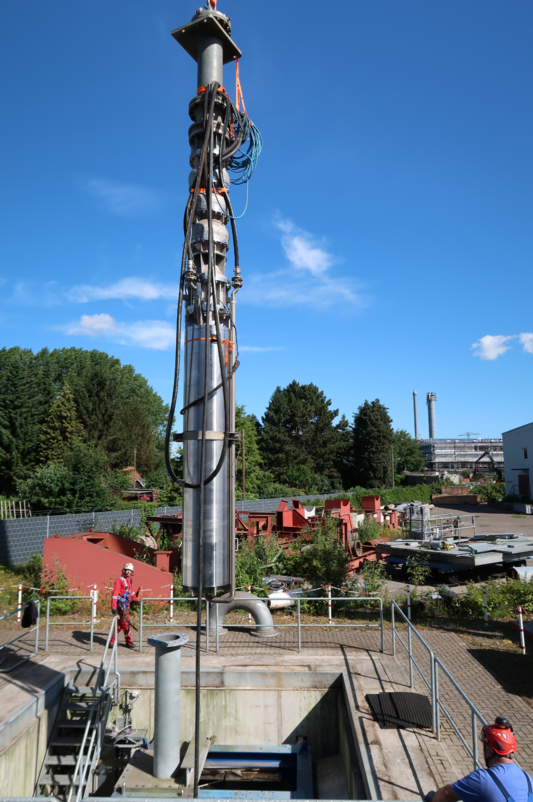Subsea oil storage (SOST) in the North Sea

- Two 30” crude oil export pumps for subsea storage
- Permanent circulation and warming maintains oil liquefied
Application

Subsea oil storage tanks (SOST) are used as temporary storage solutions for oil platforms, particularly in the North Sea as they enable extraction from small oil pools without the need to build fixed line infrastructure.
As these storage tanks are located on the seabed, the crude oil needs permanent circulation and warming (40°C/104°F) to maintain its liquefied state.
Pleuger was commissioned to develop two motors and retrofit existing pump equipment for a SOST system in the North Sea. The primary pump unit for permanent circulation, and a secondary unit for redundancy as well as rapid offload purposes.
Basic Design Details
| Main Unit | |
| Rated Flow | 1250 m³/h (5503.6 US gpm) |
| Rated Discharge Pressure | 20 bar (290.1 PSI) |
| Rated Motor Power | 1300 kW (1743.3 US hp) |
| Voltage supply | 6,6 kV |
| Motor Frame | 30” |
| Cooling Unit | |
| Noise Limitations | 75 dBA |
| Space Limitations | 2,7 x 1,2 x 1,8 m (8.9’ x 3.93’ x 5.9’) |
Challenges
- Retrofit new high performance Pleuger motors and reuse the existing pumps and pump systems as much as possible, including riser pipes etc.
- Very small caisson (gap around the motor) of only 16mm (0.6 inch), with a unit diameter of 850mm (33.5 inch)
- No water cooling for the pump system was possible, so air cooling was required, using external cooling units. These units were specifically developed due to restricted space availability as well as restrictions on noise outputs
- The pumps were also required to expunge seawater from the subsea tanks during production start-up, as well as crude oil pumping in the operating phase
- As these pumps are retrofitted to the platform, the very tight space limitations and the retrofitting process require very complex and detailed installation procedures.
Pleuger developed two bespoke 30” motors and dedicated cooling units to enable the reuse of the existing pump-end. These met all the cooling requirements as well as space and noise limitations on the platform. Furthermore, a detailed installation procedure for the crude oil pumps has been developed in close cooperation with the customer, to minimise risks during the installation procedure of the pump units.
Time frame
| Delivery of Cooling Units: | December 2019 |
| Delivery of Pump Units: | August 2020 |
| Installation on Platform: | date not yet fixed |